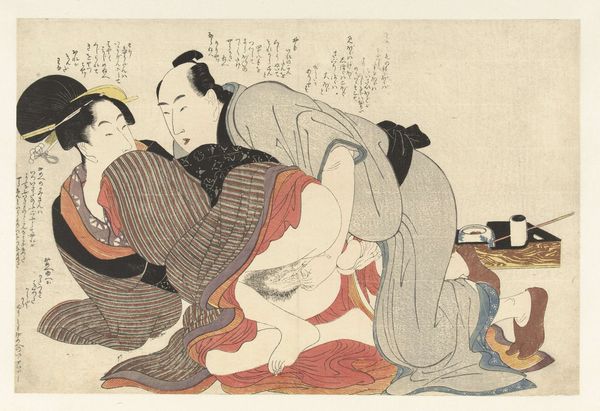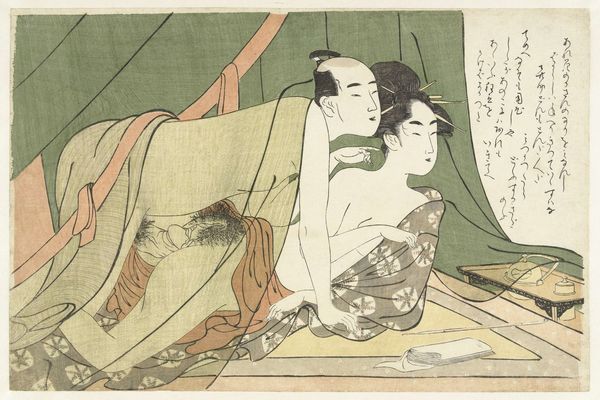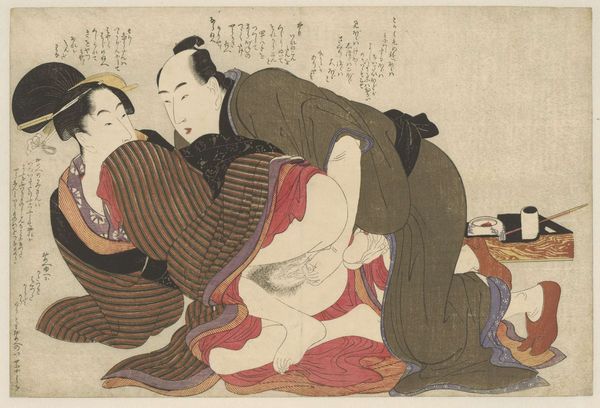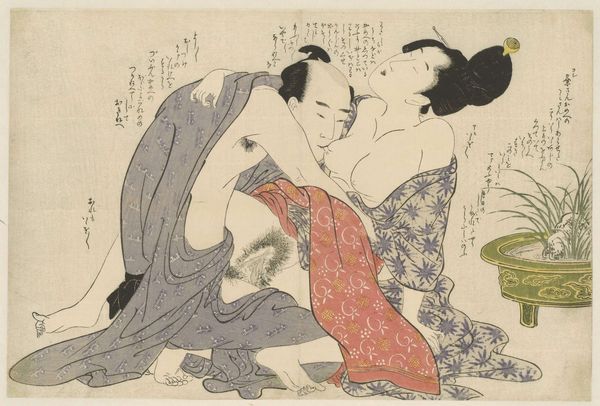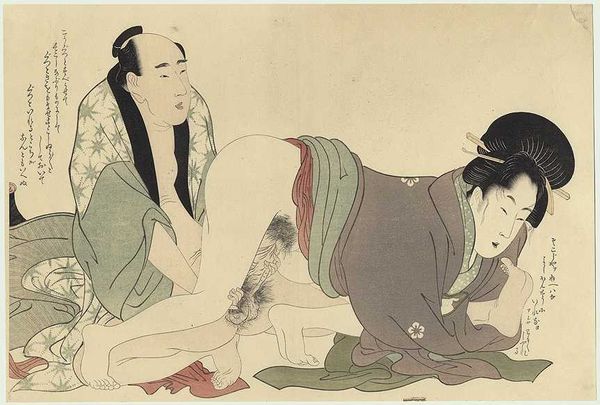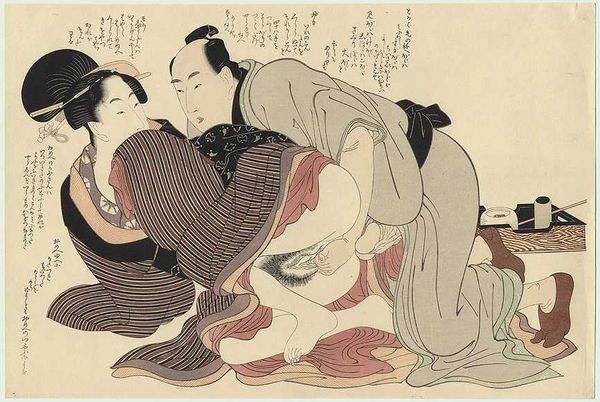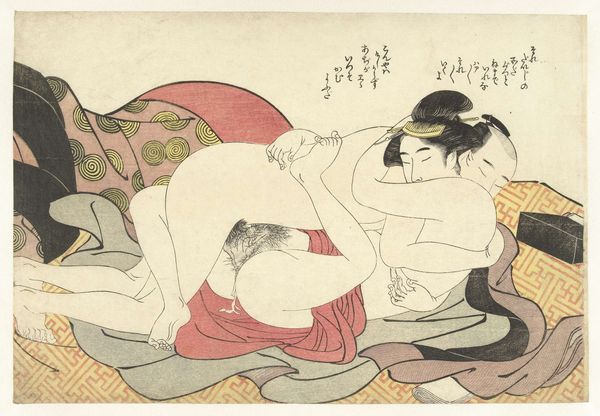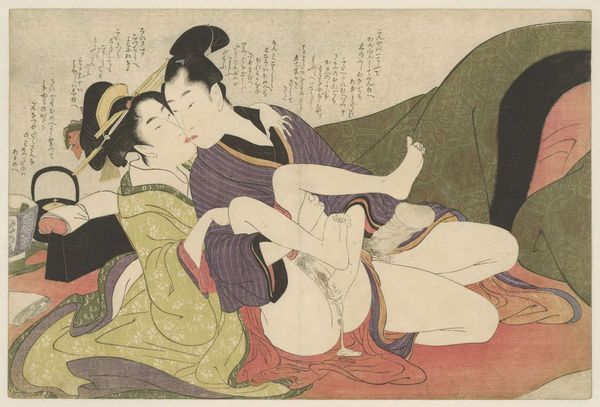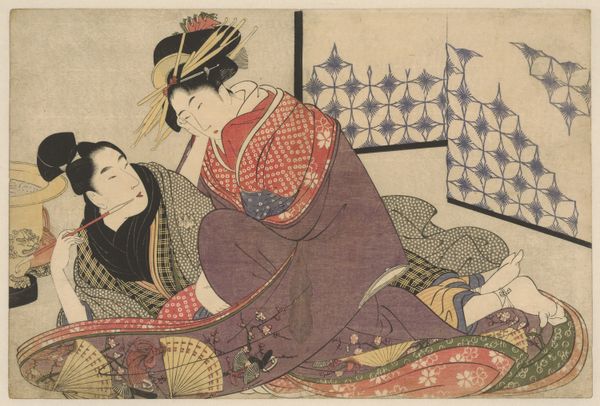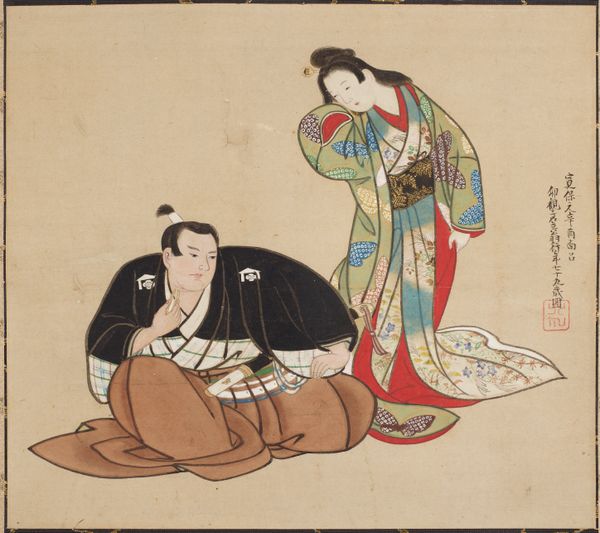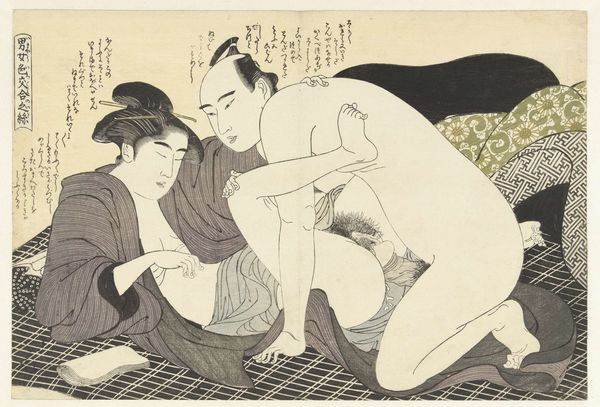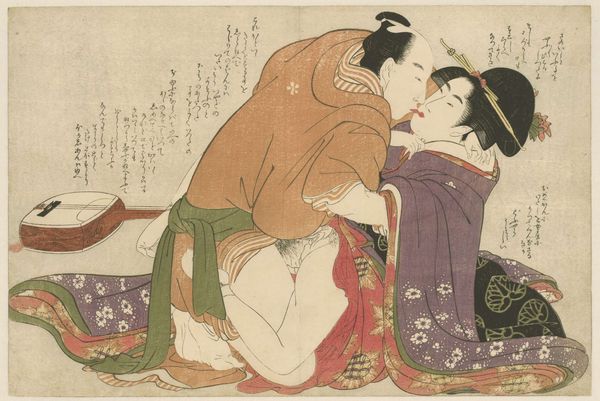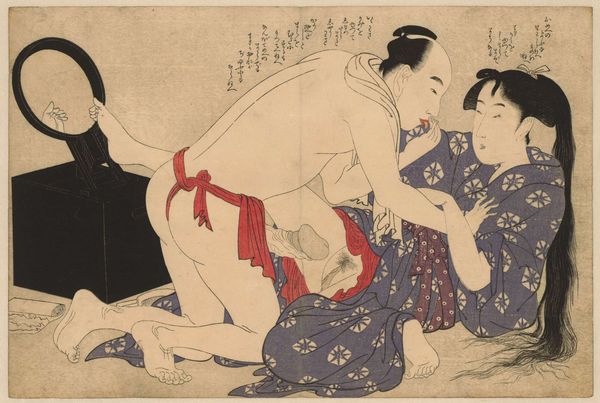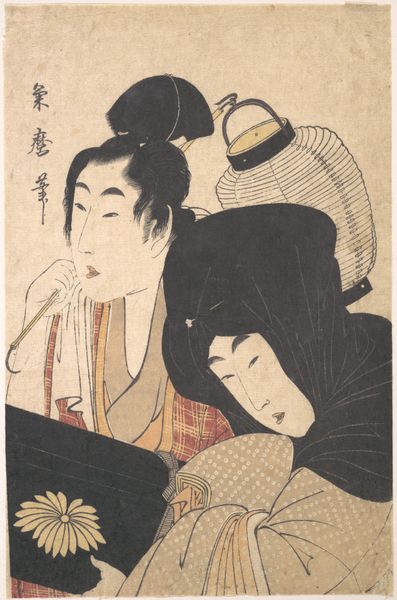
print, woodblock-print
#
portrait
# print
#
caricature
#
ukiyo-e
#
historical fashion
#
woodblock-print
#
genre-painting
#
erotic-art
Dimensions: height 253 mm, width 382 mm
Copyright: Rijks Museum: Open Domain
Curator: Here we have Kitagawa Utamaro's woodblock print, "Ouder getrouwd stel bedrijft de liefde," potentially dating from 1799. It’s currently held here at the Rijksmuseum. What’s your initial take on it? Editor: Well, besides the obvious subject matter, I'm struck by the textures. The way the soft paper contrasts with the almost aggressively graphic quality of the lines… and the dyes themselves. It looks like it uses vegetable dyes based on how muted some colours appear, but they have held their own after all this time. Curator: Indeed. Utamaro was a master of capturing everyday life in the Edo period, and ukiyo-e prints like these, though often associated with entertainment districts and the floating world, also offer us fascinating insights into social attitudes towards intimacy. Remember these prints were widely circulated among various social classes. Editor: The circulation is fascinating. How the piece shifts depending on who's holding it. Here we have a kind of low-craft format capturing intimate lives - and probably finding an eager market looking at social commentary from what might seem like a taboo position today. I want to zoom in and see those woodblock markings. Curator: Absolutely. There is a certain humour too. The facial expressions, slightly exaggerated proportions... These add a layer of caricature to the portrayal. The print isn’t just a depiction; it's a social commentary through a specific lens of erotic art in 18th-century Japan. Also, you notice, it gives an unusual, maybe unwelcome amount of natural detail? It seems less idealised, for example, than more conventional depictions of the female body that become dominant in subsequent art forms. Editor: And yet, so stylised at the same time. We see a careful rendering of fabric and patterns, but a complete disinterest in representing conventional proportion of both the sitters' bodies. Where is his waist! All elements speak to both the skilled process and its contemporary purpose of producing copies. Utamaro and his printers clearly expected heavy use. Curator: Considering this piece today, we gain a sense of the cultural shifts concerning public representations of private life and the normalization, at that period at least, of sexuality across different age groups, which makes this work very poignant. Editor: Yes, that is right. It's powerful to consider how it engages with mass production, artistic practice, intimacy, and, of course, circulation.
Comments
No comments
Be the first to comment and join the conversation on the ultimate creative platform.
